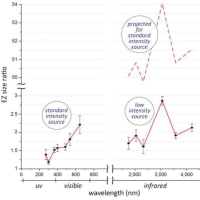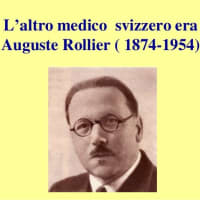1 オメガ 3 病気のリスクを下げる簡単な方法
日本脂質栄養学会
オメガ3-食と健康に関する委員会の記事
http://jsln.umin.jp/committee/index.html
https://www.globalresearch.ca/omega-3-simple-way-lower-your-risk-disease/5839848
Omega-3 — A Simple Way to Lower Your Risk of Diseaseオメガ 3 — 病気のリスクを下げる簡単な方法
By Dr. Joseph Mercolaジョセフ・マーコラ博士
Global Research, November 13, 2023グローバルリサーチ、2023 年 11 月 13 日
Mercola 12 November 2023メルコラ 2023 年 11 月 12 日
The Omega-3 Index test measures the amount of EPA and DHA, the two long-chain omega-3s found in marine sources, in red blood cell membranes, expressed as a percentage of the total fatty acids in the membrane
オメガ 3 インデックス検査では、赤血球膜内の海洋資源に含まれる 2 つの長鎖オメガ 3 である EPA と DHA の量を測定し、膜内の総脂肪酸のパーセンテージとして表します。
Most Americans have an index of 4% to 5% of EPA/DHA in their red blood cell membranes, and the target is between 8% to 12%.
ほとんどのアメリカ人の赤血球膜中の EPA/DHA 指数は 4% ~ 5% であり、目標は 8% ~ 12% です。
To raise your index from 5% to 8%, you need roughly 1,000 mg to 1,200 mg of EPA/DHA per day
指数を 5% から 8% に上げるには、1 日あたりおよそ 1,000 mg ~ 1,200 mg の EPA/DHA が必要です。
Higher omega-3 index has been linked to better health across the board, and appears to lower the risk of most, if not all, chronic diseases
高いオメガ 3 指数は全般的に健康状態の改善に関連しており、すべてではないにしても、ほとんどの慢性疾患のリスクを低下させるようです。
Another ratio commonly referred to is the omega-6 to omega-3 ratio, but this ratio is not nearly as useful or important as the omega-3 index
一般的に参照されるもう 1 つの比率は、オメガ 6 とオメガ 3 の比率ですが、この比率はオメガ 3 インデックスほど有用または重要ではありません。
EPA and DHA help thin the blood, lower the risk of stroke and heart attack, lower serum triglyceride levels, blood pressure and inflammation, add structural stability to the mitochondrial membrane and aid mitochondrial energy processes
EPAとDHAは、血液を薄め、脳卒中や心臓発作のリスクを低下させ、血清トリグリセリド値、血圧、炎症を低下させ、ミトコンドリア膜に構造的安定性を与え、ミトコンドリアのエネルギープロセスを助けるのに役立ちます。
(原文ではここに動画があります)
*
In this video, I interview William (Bill) Harris, Ph.D., an internationally recognized expert on omega-3 fatty acids.
このビデオでは、オメガ 3 脂肪酸の国際的に認められた専門家であるウィリアム (ビル) ハリス博士にインタビューします。
He’s been studying omega-3s since 1980 and has published more than 300 scientific papers on fatty acids and health.
彼は 1980 年からオメガ 3 を研究しており、脂肪酸と健康に関する 300 以上の科学論文を発表しています。
Three years ago, he founded the Fatty Acid Research Institute (FARI)1 in South Dakota, which specializes in epidemiological research, where they look at the relationship between blood omega-3 levels and risk for disease.
3 年前、彼はサウスダコタ州に脂肪酸研究所 (FARI)1 を設立しました。この研究所は、血中オメガ 3 濃度と病気のリスクとの関係を調査する疫学研究を専門としています。
He’s also a faculty member of the University of South Dakota School of Medicine.
彼はサウスダコタ大学医学部の教員でもあります。
“We’re trying to build a case that omega-3 levels in the blood are as, if not more, important than knowing your cholesterol level when it comes to your health and being able to control it,” he says.
「私たちは、健康に関してコレステロール値を知り、それをコントロールできるかどうかについては、血中のオメガ3濃度がコレステロール値を知ることと同じくらい、あるいはそれ以上に重要であるという主張を構築しようとしています」と彼は言う。
The Omega-3 Index
オメガ3インデックス
What he’s referring to is the level of omega-3 in your red blood cell membranes.
彼が言及しているのは、赤血球膜内のオメガ 3 のレベルです。
Two decades ago, his team developed a red blood cell membrane-based omega-3 test called the Omega-3 Index.
20年前、彼のチームはオメガ3インデックスと呼ばれる赤血球膜に基づくオメガ3検査を開発した。
You can take the Omega-3 Index test at their website for only $49.95.
オメガ 3 インデックス テストは、ウェブサイトでわずか 49.95 ドルで受けることができます。
The Index measures the amount of EPA and DHA, the two long-chain omega-3s found in marine sources, in red blood cell membranes, expressed as a percent of the total fatty acids in the membrane.
この指数は、赤血球膜内の海洋資源に含まれる 2 つの長鎖オメガ 3 である EPA と DHA の量を測定し、膜内の総脂肪酸のパーセントとして表します。
“We thought that was absolutely the best way to assess your body’s omega-3 status, and so we’ve been using that ever since,” he says.
「私たちは、これが体のオメガ 3 の状態を評価する最良の方法であると考え、それ以来ずっとそれを使用しています」と彼は言います。
Harris has conducted correlation studies showing the Omega-3 Index test reflects the status of the heart in heart transplant patients, for example. Commenting on the usefulness of the index, Harris says:
ハリス博士は、例えばオメガ3指数検査が心臓移植患者の心臓の状態を反映していることを示す相関研究を実施した。 ハリス氏はインデックスの有用性について次のように述べています。
“It responds very well to increased intake of EPA and DHA, like a good biomarker should, and higher levels have been linked to better health across the board of a variety of disease conditions, so I think it really is meaningful.”
「優れたバイオマーカーがそうであるように、EPA と DHA の摂取量の増加に非常によく反応します。また、レベルが高いほど、さまざまな病状全般にわたって健康状態の改善に関連しているため、本当に意味があると思います。」
Higher Omega-3 Consistently Linked to Better Health
より高いオメガ 3 はより良い健康に一貫して関連しています
Harris goes on to discuss the relevance of epidemiological, population-based studies, which is where you look at large datasets of people.
ハリス氏は続けて、人々の大規模なデータセットを調べる疫学的な集団ベースの研究の関連性について議論します。
The Framingham Study is one classic example, where they sought to determine why so many men were dying of heart attacks in a Boston suburb in the 1940s.
フラミンガム研究は典型的な例の 1 つで、1940 年代にボストン郊外で非常に多くの男性が心臓発作で死亡した理由を解明しようとしました。
Healthy men and women were recruited and data were collected on their lifestyles, diet and bloodwork.
健康な男性と女性が募集され、彼らのライフスタイル、食事、血液検査に関するデータが収集されました。
Participants were then followed for decades, to see who died of heart attack.
その後、参加者は誰が心臓発作で死亡したかを確認するために数十年間追跡調査された。
The Framingham studies developed the concept of risk factors, which for heart attack include high blood pressure and smoking.
フラミンガム研究は、心臓発作の危険因子の概念を開発しました。危険因子には高血圧や喫煙が含まれます。
In the mid-1970s, offspring of participants in the original Framingham study were recruited for additional research.
1970 年代半ば、最初のフラミンガム研究の参加者の子孫が追加研究のために募集されました。
This is known as the Framingham Offspring Study, and it included Omega-3 Index testing of stored blood samples.
これはフラミンガム子孫研究として知られており、保存された血液サンプルのオメガ 3 インデックス検査が含まれていました。
“The people, on average, were about 65 at the time that blood was drawn in the early 2000s.
「2000年代初頭の採血当時、参加者は平均して約65歳でした。
We then asked the question, ‘If you have a high (or low) omega-3 index at that age, does that predict any disease outcomes?’
次に、「その年齢でオメガ 3 指数が高い(または低い)場合、それは何らかの病気の転帰を予測しますか?」という質問をしました。
Yes, it does. It predicts risk for Alzheimer’s disease. It predicts risk for heart disease. It predicts risk for death from any cause.
はい、そうです。 アルツハイマー病のリスクを予測します。 心臓病のリスクを予測します。 あらゆる原因による死亡のリスクを予測します。
With higher levels of omega-3, people live longer.
オメガ 3 のレベルが高いほど、人々は長生きします。
That’s a microcosm of the kinds of studies we work on at the Fatty Acid Research Institute because there have been 50 or 60 Framingham-type studies all around the world.
世界中で 50 ~ 60 のフラミンガム タイプの研究が存在するため、これは私たちが脂肪酸研究所で取り組んでいる種類の研究の縮図です。
[A]lmost all have measured omega-3 levels and disease outcomes. This is our sandbox!”
ほぼてがオメガ 3 レベルと疾患の転帰を測定しました。 ここは私たちのサンドボックスです!」
What About the Omega-6 to Omega-3 Ratio?
オメガ6とオメガ3の比率はどうですか?
Another ratio commonly referred to is the omega-6 to omega-3 ratio, but Harris doesn’t think this ratio is nearly as useful or important as the omega-3 index.
一般的に参照されるもう 1 つの比率は、オメガ 6 とオメガ 3 の比率ですが、ハリス氏は、この比率がオメガ 3 指数ほど有用または重要ではないと考えています。
For starters, it’s not very precise because there are other omega-3 fats besides EPA and DHA, such as DPA and ALA.
まず第一に、オメガ 3 脂肪には EPA や DHA 以外にも DPA や ALA などがあるため、あまり正確ではありません。
There are also seven different types of omega-6 fatty acids, and we don’t know a whole lot about them.
オメガ 6 脂肪酸にも 7 種類ありますが、それらについてはよくわかっていません。
One exception is linoleic acid (LA), which I’ve written about on many occasions. I also cowrote a paper on LA2 with Christopher D’Adamo, which was published in the peer-reviewed journal Nutrients in July 2023.
例外の 1 つはリノール酸 (LA) で、これについては何度も書いてきました。 また、クリストファー・ダダモと LA2 に関する論文を共同執筆し、2023 年 7 月に査読誌『Nutrients』に掲載されました。
“So, when you say omega-6 or omega-3, you don’t really know what the denominator is and what the numerator is, and it presumes that all the omega-3s behave the same and have the same health benefits, and all the omega-6s have the same health benefits or detriments, which is really not true,” Harris explains.
「つまり、オメガ 6 やオメガ 3 というと、分母が何なのか、分子が何なのかは実際には分からず、すべてのオメガ 3 が同じように作用し、同じ健康上の利点があると仮定されています。 すべてのオメガ6が同じ健康上の利点または有害性を持っていますが、それは実際には真実ではありません」とハリスは説明します。
Linoleic Acid — The Most Destructive Ingredient in Your Diet
リノール酸 — 食事の中で最も有害な成分
“That’s not very nuanced in my view, because we’ve seen some studies where some omega-6 fatty acids are apparently good.
「それは私の見解ではあまり微妙ではありません。なぜなら、一部のオメガ6脂肪酸が明らかに良いという研究結果もいくつか見ているからです。
They’re associated with better outcomes, whereas, others are not.
それらはより良い結果と関連していますが、そうでないものもあります。
So, to pool them into one metric where you don’t know how it’s made up is another reason I don’t like this particular ratio.
したがって、どのように構成されているかわからない 1 つの指標にそれらをプールすることは、私がこの特定の比率を好まないもう 1 つの理由です。
I guess the third one is, you can have a high level of omega-6 and a high omega-3, or a low omega-3 and a low omega-6 and have exactly the same ratio.
3 つ目は、高レベルのオメガ 6 と高オメガ 3、または低レベルのオメガ 3 と低オメガ 6 をまったく同じ比率にすることができるということです。
It’s really the amount that’s there that’s the most important.
本当に重要なのはそこにある量です。
What we’re lacking in America, or in the West in general, is the long-chain omega-3s. That’s the biggest problem.
アメリカ、あるいは西洋全般に欠けているのは、長鎖オメガ 3 です。 それが最大の問題です。
I hate to distract from that problem by digging into the omega-6 side of it because some people could say, ‘Well, I can fix my ratio just by eating less omega-6 and not increasing my omega-3,’ and I don’t think that’s going to help.”
私は、オメガ 6 の側面を掘り下げてその問題から目をそらすのは嫌いです。なぜなら、「オメガ 6 の摂取量を減らし、オメガ 3 の摂取量を増やさなければ、比率を修正できる」と言う人もいるかもしれないからです。 それが役に立つとは思わない。」
The counterargument to that would be that there are enzymes, desaturases and elongases, that take the baseline essential fats — ALA and LA — and convert these precursors into the long chains products, EPA/DHA and ARA, and if you overwhelm the system with LA, you essentially monopolize those enzyme systems and the omega-3 products are harder to make.
これに対する反論は、ベースラインの必須脂肪である ALA と LA を受け取り、これらの前駆体を長鎖生成物である EPA/DHA と ARA に変換する酵素、デサチュラーゼ、エロンガーゼが存在するということです。
そして、LAでシステムを圧倒すると、本質的にそれらの酵素システムを独占することになり、オメガ3製品を作るのが難しくなります。
If you consume preformed long-chain omega-3s, then that is not an issue, but if you don’t, then excessive omega-6s will prevent the conversion of omega-3.
あらかじめ形成された長鎖オメガ 3 を摂取している場合は問題ありませんが、そうでない場合は、過剰なオメガ 6 がオメガ 3 の変換を妨げます。
Limiting omega-6 can, in this way, be somewhat helpful, as it allows for the shorter chain omega-3 (ALA) to be converted to the longer chain EPA and DHA. Harris responds:
このようにオメガ6を制限すると、短鎖オメガ3(ALA)を長鎖のEPAやDHAに変換できるようになるため、多少は役に立つ可能性があります。 ハリスはこう答えます。
“That’s true, but there are certain metabolites of even arachidonic acid that are beneficial.
「それは本当ですが、アラキドン酸であっても有益な特定の代謝物は存在します。
For example, lipoxgenase A1 is anti-inflammatory, and prostacyclin prevents platelet aggregation.
たとえば、リポキシゲナーゼ A1 は抗炎症作用があり、プロスタサイクリンは血小板凝集を防ぎます。
There are metabolites of linoleic acid itself that don’t go through arachidonic that have at least beneficial relationships with blood pressure and inflammation.
リノール酸自体には、アラキドン酸を経由しない代謝物があり、少なくとも血圧や炎症と有益な関係があります。
It’s a much more complicated system, I think, than just omega-6 is bad, omega-3 is good. It’s just much more nuanced than that.”
これは単にオメガ6が悪い、オメガ3が良いというだけではなく、もっと複雑なシステムだと思います。 それはそれよりもはるかに微妙です。」
OmegaQuant does offer an omega-6 to omega-3 ratio test called Omega-3 Index plus Omega-6/Omega-3 Ratio.
OmegaQuant では、Omega-3 Index plus Omega-6/Omega-3 Ratio と呼ばれるオメガ 6 とオメガ 3 の比率テストを提供しています。
But when it comes to addressing a bad ratio, Harris still believes the best way to do that is to increase your EPA and DHA intake, as opposed to merely lowering your omega-6 intake.
しかし、悪い比率に対処する場合、ハリス氏は、単にオメガ6の摂取量を減らすのではなく、EPAとDHAの摂取量を増やすことが最善の方法だと今でも信じています。
Why Omega-3s Are so Beneficial to Health
オメガ3が健康に非常に有益な理由
So, what is it about omega-3 EPA and DHA that makes them so important for health? In summary, these fatty acids:
では、オメガ 3 EPA と DHA はなぜ健康にとってそれほど重要なのでしょうか? 要約すると、これらの脂肪酸は次のとおりです。
Help thin the blood, which discourages inappropriate clotting that can lead to a stroke or heart attack
血液を薄くし、脳卒中や心臓発作を引き起こす可能性のある不適切な凝固を防ぎます。
Lower serum triglyceride levels
血清トリグリセリド値の低下
Help lower blood pressure, in part by improving the health of the lining of your blood vessels so that they can relax better
血管内層の健康状態を改善して血管がよりよくリラックスできるようにすることで、血圧を下げる効果があります。
Have several anti-inflammatory effects - For example, provided you have enough EPA and DHA in your membranes, when an inflammatory insult occurs, metabolites of the EPA and DHA - resolvins and protectins - will be synthesized. As their names imply, these metabolites help protect against and resolve inflammation. If you do not have sufficient omega-3, the inflammatory response persists longer and can become chronic
いくつかの抗炎症作用があります。たとえば、膜内に十分な EPA と DHA があれば、炎症性発作が起こると、EPA と DHA の代謝物であるレゾルビンとプロテクチンが合成されます。 名前が示すように、これらの代謝産物は炎症を防ぎ、炎症を解消するのに役立ちます。 十分なオメガ 3 が不足すると、炎症反応がより長く持続し、慢性化する可能性があります。
Help the mitochondrial membrane process energy – Improving the fluidity and flexibility of the mitochondrial membrane allows enzymes and the other proteins embedded in the membrane to operate more smoothly
ミトコンドリア膜のエネルギー処理を助ける - ミトコンドリア膜の流動性と柔軟性を改善することで、膜に埋め込まれた酵素やその他のタンパク質がよりスムーズに機能できるようになります。
Add structural stability to cell membranes throughout the body - Importantly, if the membrane is loaded with monounsaturated or saturated fats, the omega-3 cannot get in there. The membrane will then be stiffer in that area, which impedes the activity of essential receptors, enzymes, transporters and other proteins that control the flow of nutrients into and waste products out of the cell.
体全体の細胞膜に構造的安定性を追加します - 重要なのは、細胞膜に一価不飽和脂肪または飽和脂肪が蓄積されている場合、オメガ 3 がそこに入ることができないことです。 そうすると、その領域の膜が硬くなり、細胞への栄養素の流れや細胞からの老廃物の流れを制御する必須の受容体、酵素、トランスポーター、その他のタンパク質の活動が妨げられます。
With the proper amount of omega-3, the membranes allow these agents to move freely, making everything work as it should
適切な量のオメガ-3 があれば、膜はこれらの物質が自由に移動できるようになり、すべてが正常に機能します。
























